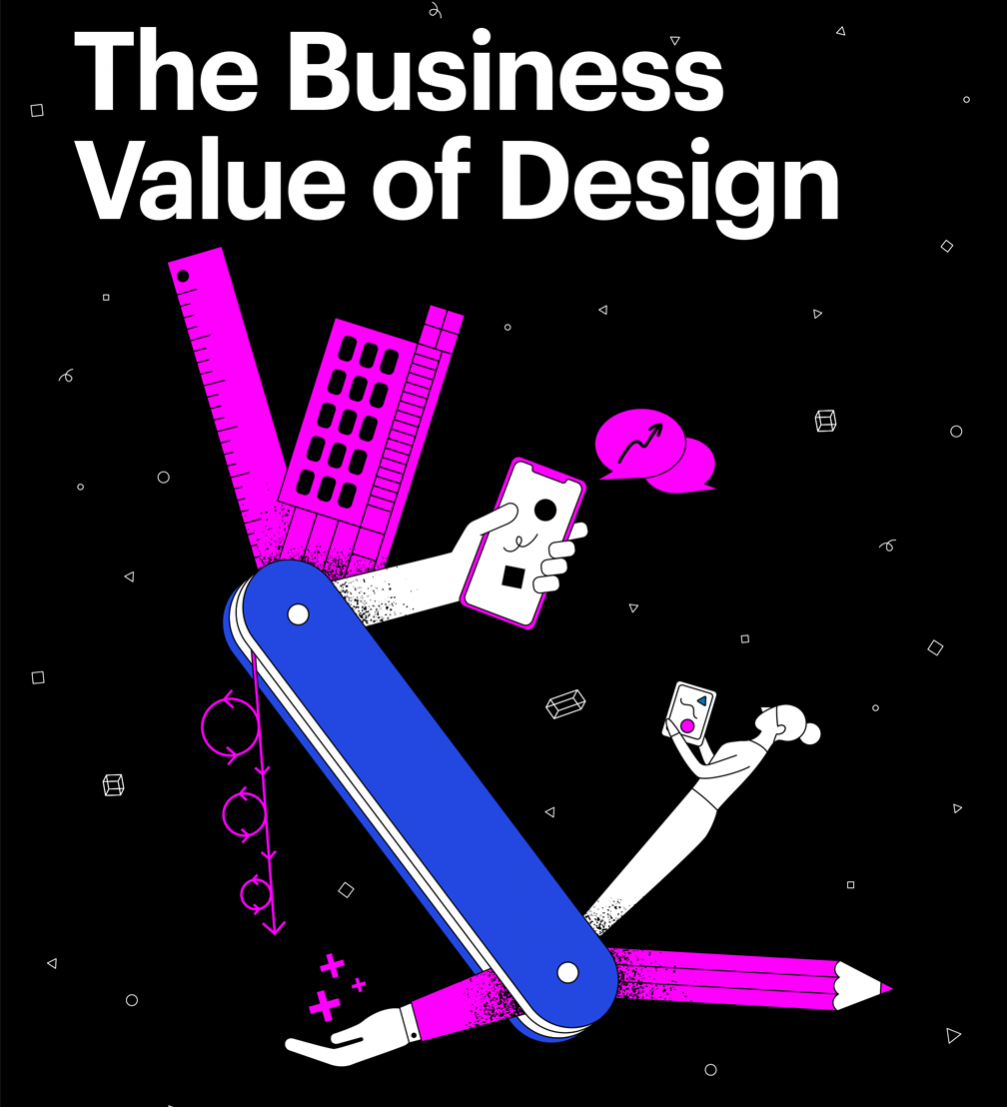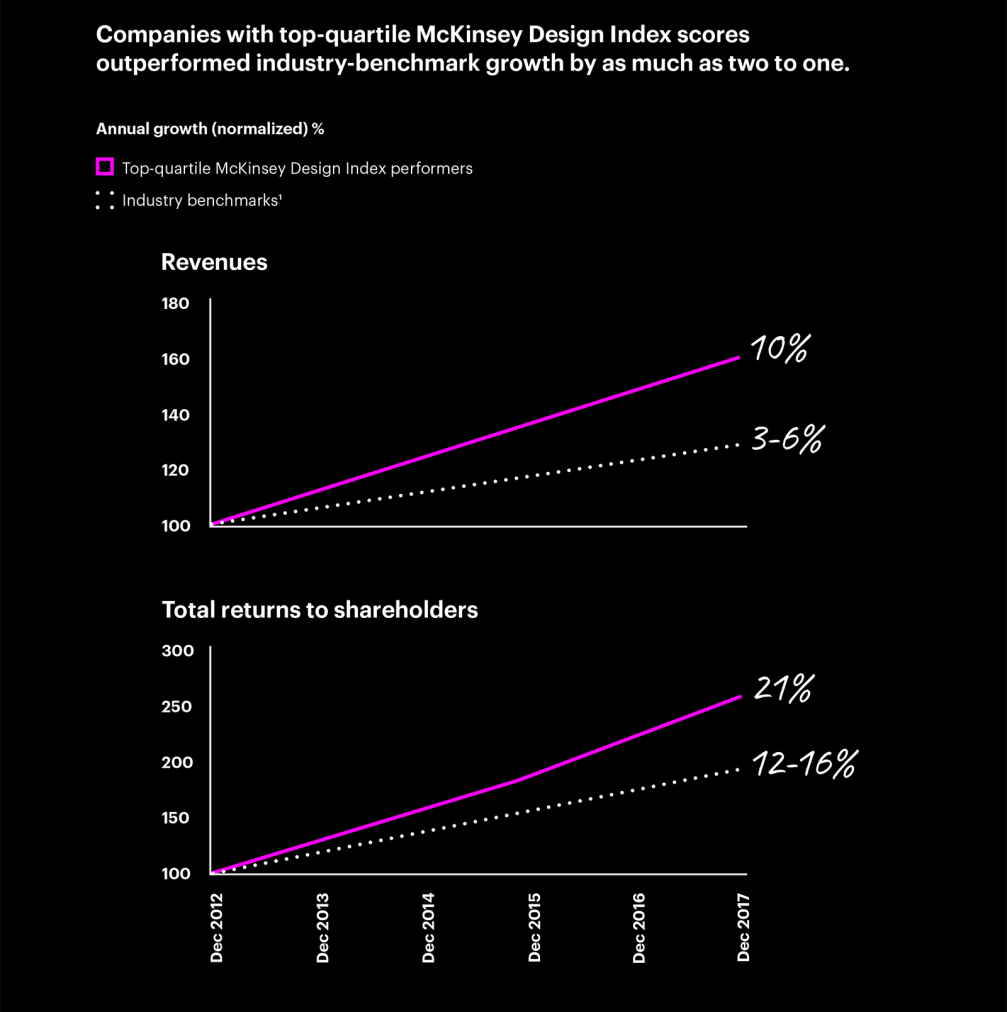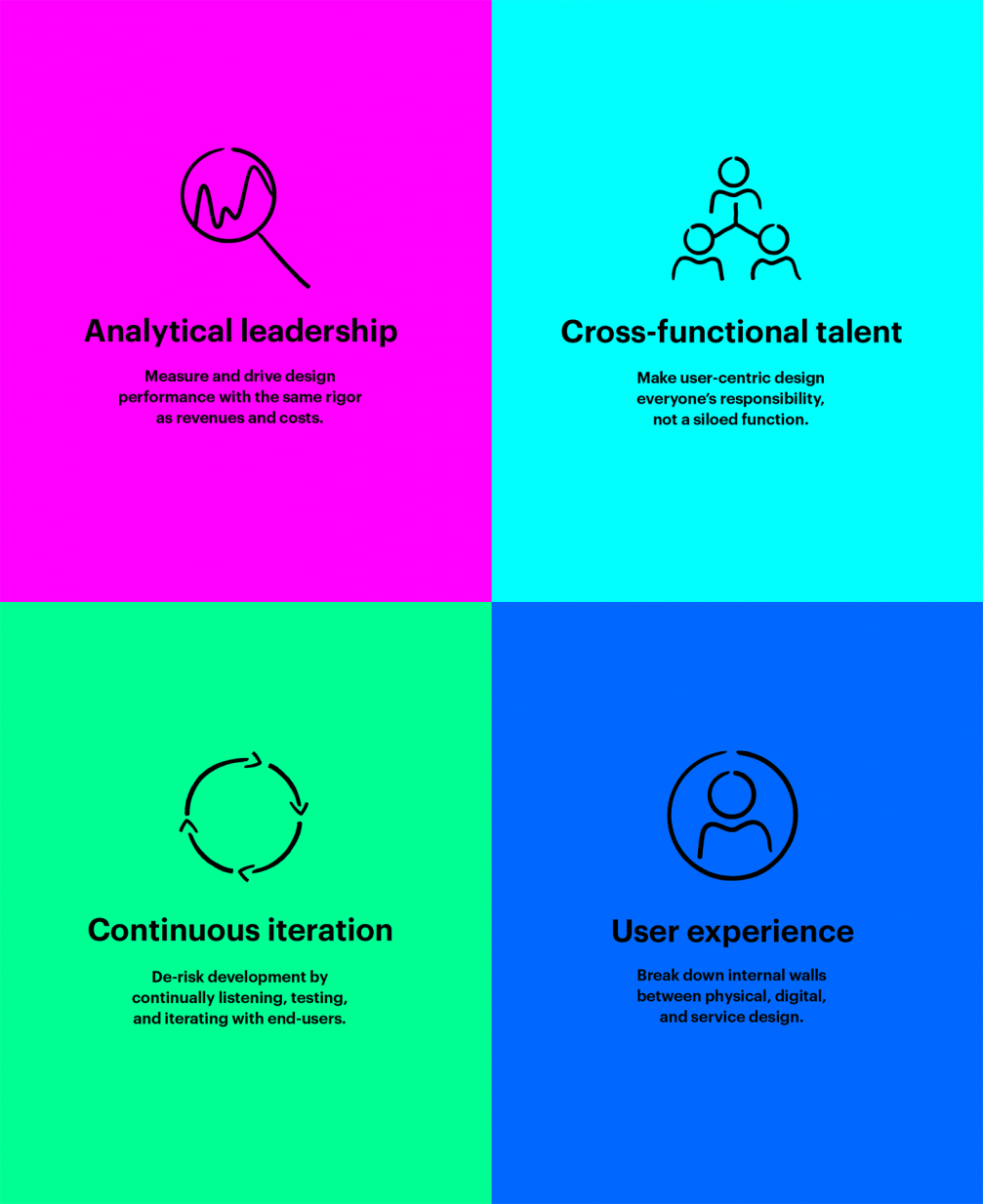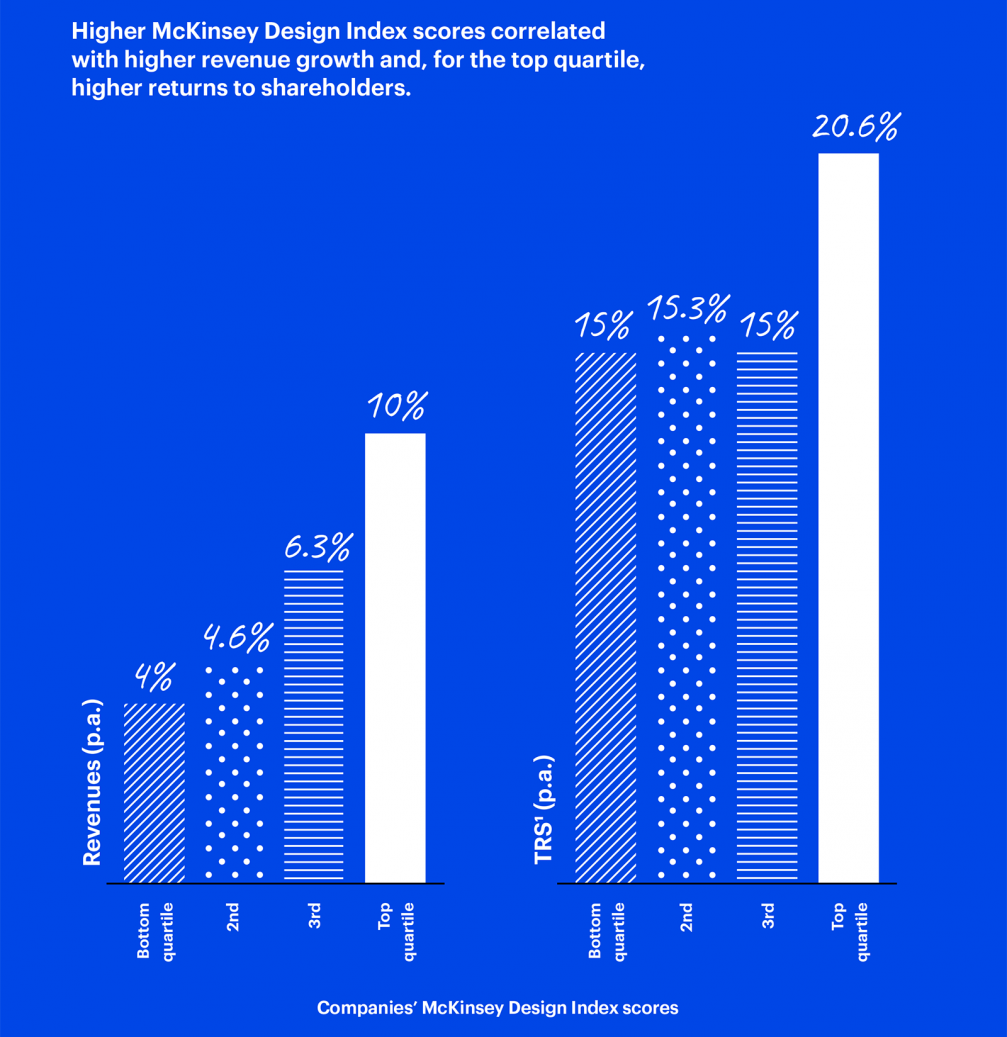
In October one of the most influential international management consulting firms «McKinsey & Company» published its first study on the business value of design. This is the first study of such a scope, collecting the design practices of 300 companies of various industries from all over the world, 30 in–depth interviews with business leaders, over two million financial data points and around 100 000 design approaches over the duration of five years.
«McKinsey» describes its analysis as «the most extensive and rigorous research undertaken anywhere» that proves the correlation between design practices and revenue growth. Although only recently design was only a method to make products more attractive, now it is a way of thinking — a creative process that is motivated by the desire to understand and meet the needs of users. «Findings from the survey suggest that for a business to benefit, it is necessary for top management to accept design and embrace it early in the process,» comments «McKinsey».
The key findings of the study are, firstly, the link between successful design practices and the economic growth of a business — design inclusive companies showed a 32% higher revenue growth and a 56% higher growth of total return to shareholders in comparison to similar companies that do not incorporate positive design practices. Secondly, these results hold true for both physical and digital products and services as well as hybrids of the former two. Thirdly, the correlation between design actions and revenue is not linear — the market disproportionately rewards the top 25% of businesses, while the difference between the remaining 75% is marginal.

The study uses the «McKinsey» Design Index (MDI) as a metric to evaluate the efficiency of design practices and to link them with economic growth. The study groups the most successful design actions in four categories that characterize the business value of design.

More than a feeling — analytical leadership
It might seem surprising that design decisions are not measured with the same precision and rigour as revenue or spending in a time when various digital tools and data–oriented feedback from the costumers is so common and accessible. And yet, less than 5% of the company leaders surveyed acknowledged themselves to be competent to make objective design decisions, mostly due to a lack of appropriate design metric. Leaders often make decisions based on their gut feeling rather than concrete data. In a sense, designers themselves are to blame — they are slow to evaluate the link between their designs and the financial goals of the company.
The «McKinsey» study proves that the top performers financially make design decisions analytically and at the level of top management. One of the more widespread business paradigms is the principle that what gets measured, gets done. The use of analytical design metrics can shift the focus of businesses from revenue and shareholders to a human–centric approach. Company leaders must not only recognize design decisions to be as important as financial concerns, but also must cultivate an understanding of the needs and desires of their customers to apply effective design practices and increase revenues.
More than a product — customer experience
The «McKinsey» study finds that the most successful companies merge the boundary between products and services by integrating them into united customer experience. In practice, this means to explore the needs of potential customers through observation. The top companies surveyed do not limit themselves to their traditional environment — physical, digital or service design ecosystems —, but respond to the full customer experience and meet their full potential along all points of the customer journey.
More than a department — cross–functional talent
One of the strongest correlations found in the «McKinsey» study links revenue growth with designer engagement in all development stages. In the financially most successful companies design is more than a separate, isolated department. Emphasizing the role of individual designers rather than design departments and integrating them into cross–functional teams yields the best results.
Another significant dimension of team dynamics if the support of top performing designers through incentives. Companies in the top quartile for design overall were almost three times more likely to have specific incentive programs for designers. Incentive programs correlate with design outcomes, such as user satisfaction. Such mechanisms are not limited to financial rewards but include freedom to work on personal projects, participation in conferences and networking events and connection to the wider design community. The study emphasizes that good design needs appropriate tools and infrastructure ― software programs, communication platforms, data analysis tools and prototyping technologies.
More than a phase — continuous iteration
Excellent design flourishes in an environment that promotes learning, testing and iteration in collaboration with the users of a product or a service. Continuous qualitative and quantitative research of the product well after it enters the market yields the best results. The study emphasizes that good design practice is to do prototype testing together with the potential users both in the early development process as well as after the product launch.
The first steps towards great design
The study finds that design practices that excel in all aforementioned categories are rare among the surveyed companies. More than 40% of the study participants still do not communicate with their customers during the development stage. Over a half admitted that they have no objective way to assess or set targets for the output of their design teams. Without a clear understanding of the link between design practices and financial goals, leaders are reluctant to direct their resources to design functions. Although most designers have a firm grasp of the four MDI priorities, it is impossible to focus on them without the participation and trust of the top management.
The potential for design–driven growth is enormous, especially in the contemporary product and service market environment where opportunities for user–driven, analytically informed design are as abundant as ever. The developments in artificial intelligence, new technologies of large data processing, social media and smart devices help to form and maintain a feedback loop with the users of products, enable continuous iterations, give objective metrics to evaluate the efficiency of design decisions and encourage collaboration between designers and the rest of the team developing a product. «Companies that tackle these four priorities boost their odds of becoming more creative organizations that consistently design great products and services. The prizes are as rich as doubling their revenue growth and shareholder returns over those of their industry counterparts,» explains «McKinsey».

The authors of the study are Benedict Sheppard, Hugo Sarrazin, Garen Kouyoumjian and Fabricio Dore. You can read the full study on the «McKinsey» webpage. The presentation of the study is available here. A «McKinsey» Design Index online tool that measures the design performance of a company and benchmarks it with 300 businesses surveyed in the study, is available in beta version.
«McKinsey» is a global management consulting firm that carries out qualitative and quantitative research to evaluate management decisions both in the public as well as the private sector. «McKinsey» employs more than 350 design consultants, including professionals from design studios «Lunar» and «Veryday» that have been recently acquired by «McKinsey».




Viedokļi